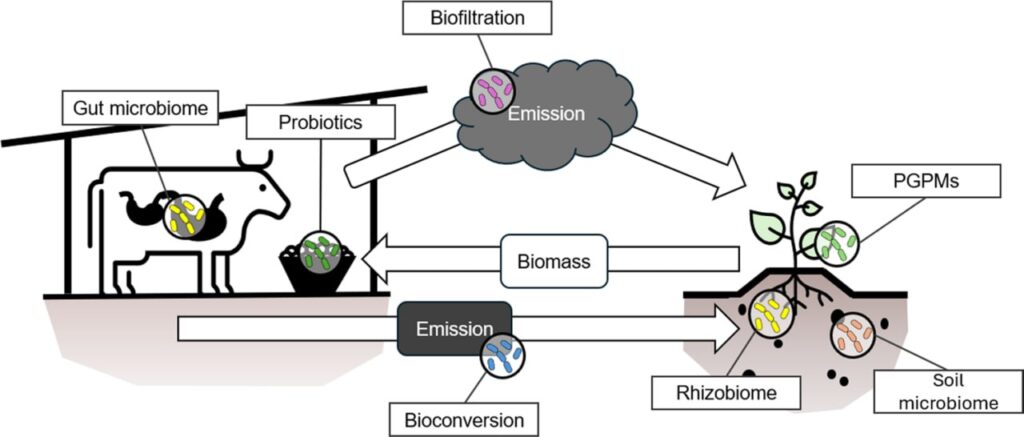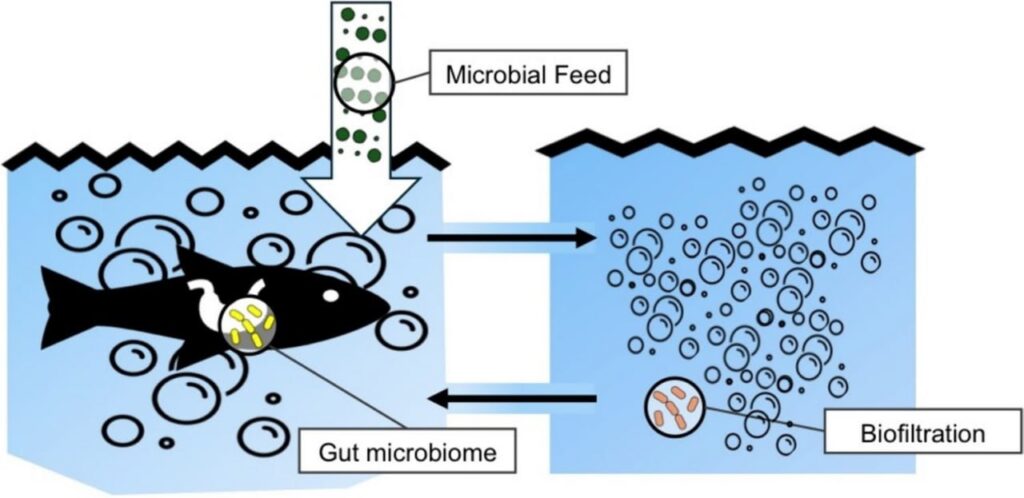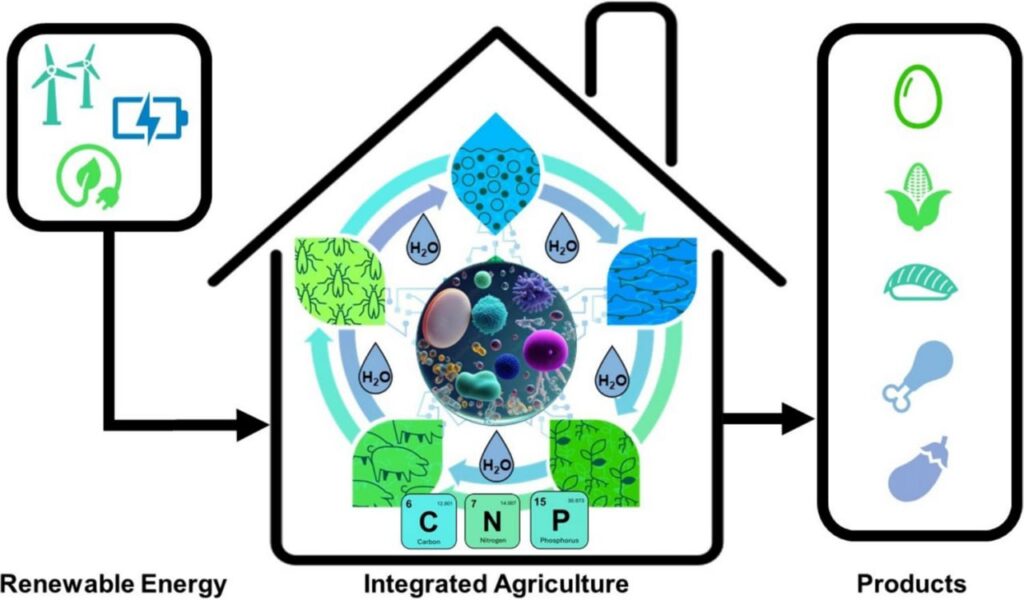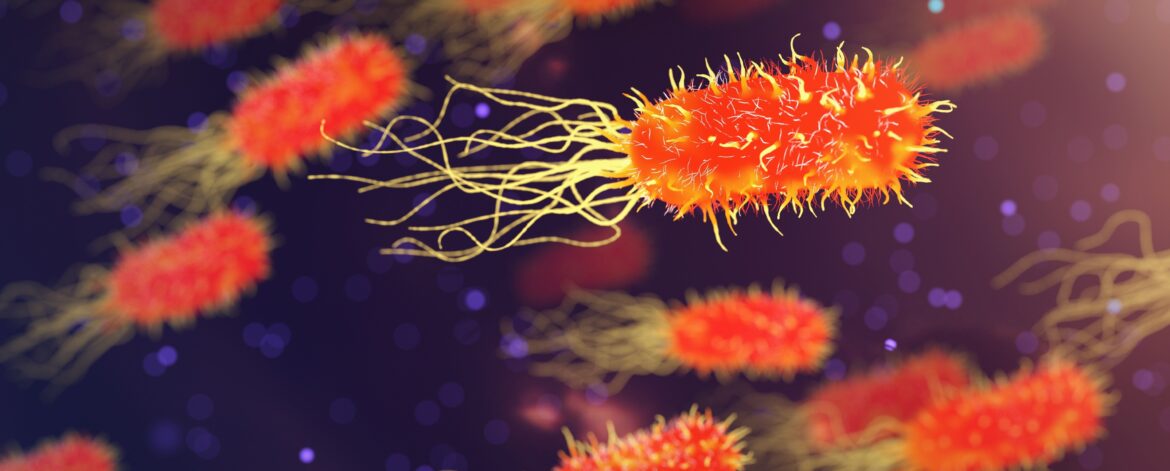Introduction
In the quest for sustainable agriculture, the role of microorganisms(1) is increasingly recognized as vital for fostering a circular economy. The recent advancements in biotechnology and microbial research have paved the way for innovative approaches to enhance soil fertility, crop yield, and livestock productivity while minimizing environmental impact. This blog(link) delves into the findings of a recent study that highlights the significance of leveraging microorganisms in agriculture to build a more resilient and sustainable food system.
The Role of Microorganisms in Plant-Based Agriculture
Microorganisms play an indispensable role in plant-based agriculture by driving essential processes like nutrient cycling, soil fertility, and plant health. The study emphasizes the growing importance of these microorganisms in modern agricultural practices, particularly in the shift from chemical-based farming to more sustainable, biologically-driven methods.
Microorganisms, such as bacteria and fungi, are crucial in transforming organic matter into nutrients that plants can absorb. For instance, nitrogen-fixing bacteria convert atmospheric nitrogen into a form that plants can use, significantly enhancing soil fertility. The study points out that these microbial activities are fundamental to maintaining healthy soil ecosystems, which are the foundation of productive agriculture.
One of the key innovations discussed in the research is the use of plant growth-promoting microorganisms (PGPMs)(2). These microorganisms can boost plant growth by enhancing nutrient uptake, stimulating root growth, and protecting plants against pathogens. For example, PGPMs like Rhizobium(3) and Mycorrhiza(4) have been shown to significantly increase crop yields while reducing the need for synthetic fertilizers. This shift towards microbiome engineering, where the microbial communities in the soil and rhizosphere are carefully managed and optimized, is a crucial step in promoting long-term soil sustainability and agricultural productivity.
The study also highlights the potential of using microbial biofertilizers, which are not only cost-effective but also environmentally friendly. These biofertilizers help to maintain the balance of soil microbiota, ensuring that nutrients are cycled efficiently and that the soil remains healthy for future crops. As agricultural practices continue to evolve, the integration of these microbial strategies is expected to play a pivotal role in enhancing the resilience of plant-based agriculture against climate change and other environmental stressors.

Innovations in Animal-Based Agriculture
Animal-based agriculture, encompassing livestock and aquaculture, is another domain where microorganisms are making transformative impacts. The study discusses how the use of probiotics and microbiome engineering in livestock management can lead to healthier animals, increased productivity, and reduced environmental impact, particularly in terms of greenhouse gas emissions.
Probiotics, which are beneficial microorganisms introduced into the diets of livestock, have been shown to improve gut health, enhance nutrient absorption, and boost the overall immunity of animals. For instance, specific strains of Bacillus(5) and Lactobacillus(6) are being used to reduce methane production in ruminants like cattle. Methane is a potent greenhouse gas, and reducing its emissions is critical in the fight against climate change. The study cites that implementing these microbial solutions can potentially reduce methane emissions by up to 30%, making livestock farming more sustainable.
Additionally, the research highlights the role of microbial bioconversion in managing animal waste. Traditional waste disposal methods often lead to environmental pollution, but microbial processes can convert waste into valuable products like biogas(7) and organic fertilizers(8). For example, anaerobic digestion, a process driven by microorganisms, is used to convert livestock manure into biogas, which can be used as a renewable energy source. This not only helps in waste management but also contributes to the circular economy by turning waste into energy and reducing the reliance on fossil fuels.
The study also notes the growing interest in using microbial feed additives to improve the health and productivity of livestock. These additives, which include prebiotics, probiotics, and symbiotic, are designed to enhance the gut microbiome of animals, leading to better digestion, higher feed efficiency, and reduced disease incidence. As the demand for animal products continues to rise globally, these microbial innovations are essential for ensuring that livestock farming can meet this demand sustainably.
Integrated Circular Processes and Future Prospects
The concept of integrated circular processes is gaining momentum as a sustainable approach to agriculture, particularly in the context of combining plant and animal farming systems. The study explores how integrating these systems can optimize resource use, reduce waste, and enhance overall agricultural productivity through the strategic use of microorganisms.
One of the most promising integrated systems discussed in the research is aquaponics, which combines aquaculture (fish farming) with hydroponics(9) (soilless plant cultivation). In this closed-loop system, the waste produced by fish serves as a nutrient source for plants, while the plants, in turn, purify the water for the fish. This symbiotic relationship significantly reduces water consumption and the need for chemical fertilizers, making it an environmentally sustainable farming method. The study highlights that aquaponics systems can reduce water usage by up to 90% compared to traditional farming methods, making it an attractive option in water-scarce regions.
Microorganisms play a critical role in these systems by facilitating nutrient cycling and maintaining the health of both plants and animals. For instance, nitrifying bacteria are essential in converting ammonia (a toxic byproduct of fish waste) into nitrates, which plants can use as a nutrient. This process not only cleans the water but also provides essential nutrients for plant growth. The research also points out that optimizing the microbial communities within these systems can lead to higher productivity and greater resilience against diseases, further enhancing the sustainability of integrated agricultural practices.
The study also discusses the potential of using insects and microalgae in integrated farming systems. Insects, such as black soldier fly larvae, can be used to upcycle organic waste into high-quality protein for animal feed, while microalgae can be cultivated using CO2 emissions from livestock facilities, providing an additional food source while also reducing wgreenhouse gas emissions. These innovative approaches are part of a broader effort to create more resilient and resource-efficient agricultural systems that can meet the growing global demand for food in a sustainable manner.

Conclusion

The integration of microorganisms into agricultural practices offers a powerful tool for transforming traditional farming into a more sustainable and resilient system. The advancements discussed in this research, from plant growth-promoting microorganisms to probiotics in animal feed and integrated circular processes like aquaponics, highlight the immense potential of microbial innovations in agriculture.
As the world grapples with the challenges of climate change, population growth, and resource scarcity, these microbial strategies provide practical solutions that can help secure the future of food production. By continuing to explore and implement these technologies, we can move closer to a circular economy in agriculture, ensuring that our food systems are sustainable, resilient, and capable of meeting the needs of future generations.
The findings of this study underscore the critical role of microorganisms in modern agriculture and provide a roadmap for future innovations that can revolutionize the way we produce food, making it more sustainable and environmentally friendly.
References
Sustainable agriculture: leveraging microorganisms for a circular economy, Springer Link (August 2024)
Glossary
- Microorganisms are tiny living organisms, such as bacteria, viruses, fungi, and protozoa, that are too small to be seen with the naked eye. They exist in almost every environment on Earth, including soil, water, air, and inside other living organisms. Microorganisms play vital roles in processes such as nutrient cycling, fermentation, and disease control, and can be both beneficial (e.g., probiotics) and harmful (e.g., pathogens).
- PGPM (Plant Growth-Promoting Microorganisms) are beneficial microbes that enhance plant growth by improving nutrient uptake, stimulating root development, and protecting plants from pathogens.
- Rhizobium is a genus of soil bacteria that forms symbiotic relationships with legumes, fixing atmospheric nitrogen into a form that plants can use, thus enhancing soil fertility and promoting plant growth.
- Mycorrhiza refers to a symbiotic association between fungi and plant roots, where the fungi enhance water and nutrient absorption for the plant, particularly phosphorus, while the plant provides the fungi with carbohydrates.
- Bacillus is a genus of rod-shaped, gram-positive bacteria that are commonly found in soil and water, known for their ability to produce enzymes and antibiotics, and are often used as probiotics to promote plant and animal health.
- Lactobacillus is a genus of rod-shaped, gram-positive bacteria commonly found in the digestive, urinary, and genital systems of humans and animals, as well as in fermented foods like yogurt and sauerkraut. These bacteria are known for their ability to convert sugars into lactic acid, which helps maintain a healthy balance of gut flora and inhibit the growth of harmful bacteria. Lactobacillus species are widely used as probiotics to support digestive health and boost the immune system.
- Biogas is a type of renewable energy produced through the anaerobic digestion of organic materials, such as agricultural waste, manure, food waste, and sewage. In this process, microorganisms break down the organic matter in the absence of oxygen, producing a gas mixture primarily composed of methane (CH₄) and carbon dioxide (CO₂). Biogas can be used for generating electricity, heat, or as a fuel for vehicles, and its production helps in waste management and reducing greenhouse gas emissions.
- Organic fertilizers are natural fertilizers derived from organic sources such as plant residues, animal manure, compost, and other natural materials. They provide essential nutrients like nitrogen, phosphorus, and potassium to the soil, promoting healthy plant growth. Unlike synthetic fertilizers, organic fertilizers improve soil structure, increase its water retention capacity, and enhance the activity of beneficial microorganisms. They release nutrients slowly, reducing the risk of over-fertilization and environmental harm. Organic fertilizers are widely used in sustainable and eco-friendly farming practices.
- Hydroponics is a method of growing plants without soil, where plants are cultivated in a nutrient-rich water solution. In this system, the roots of the plants are directly exposed to the nutrient solution or supported by an inert medium like perlite, gravel, or rock wool. Hydroponics allows precise control over nutrient delivery, leading to faster growth and higher yields compared to traditional soil-based farming. This technique is particularly useful in areas with limited arable land, and it is widely used in controlled environment agriculture such as greenhouses and vertical farms.


